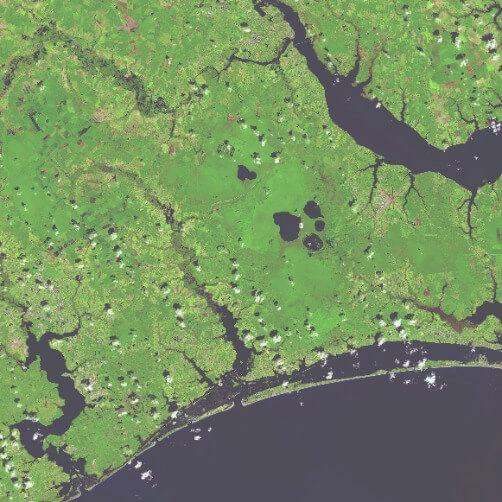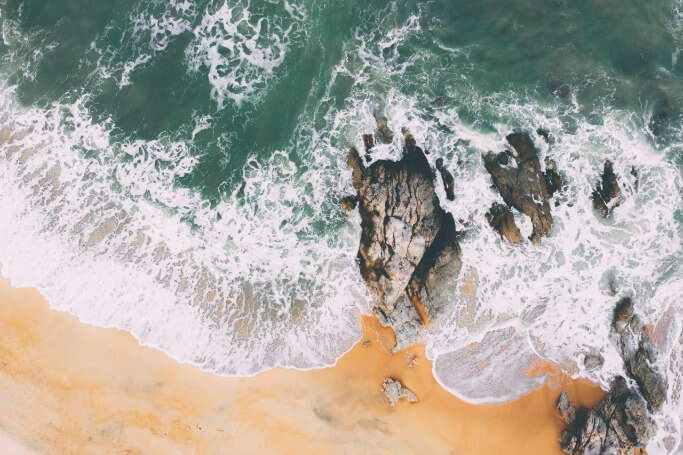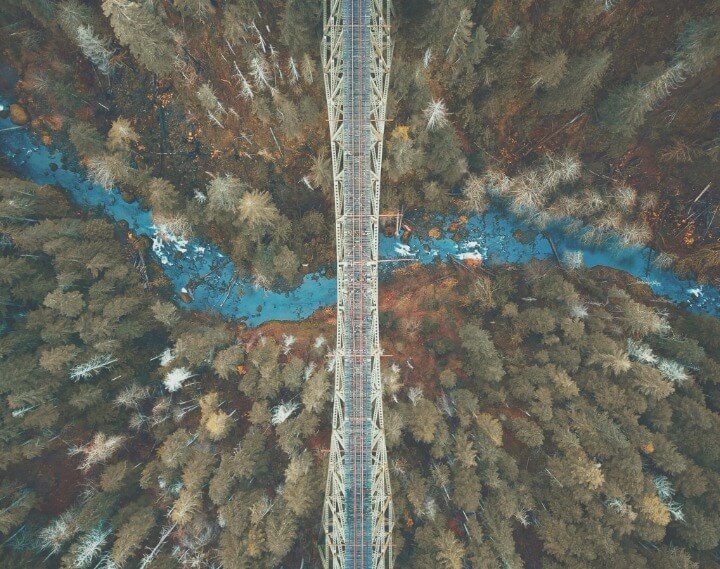St. Paul African Methodist Episcopal Zion Church has flooded twice in the last decade: in 2011 from Hurricane Irene and in 2018 from Hurricane Florence. While the church rebuilt both times from flood insurance payouts, Minister Gerald Godette is counting the days until another supercharged hurricane sends waters up the Pamlico and into their sanctuary. Yet, with fewer than ten members, the church does not have the resources to move upland.
Many small, rural churches across the East Coast find themselves in a similar predicament: they are facing the realities of climate change, but don’t have the technical knowledge, partnership, or funding to move. In many cases, these churches are the center of social life in a town, serving as a food bank, social club, spiritual support network, and community-organizing center all in one. When they are flooded, all those assets are flooded, too.
These churches also hold a key to the challenges of climate change: their location in rural areas and their existing assets position them as the perfect hubs of resilience. By connecting scientists with faith leaders, both institutions benefit from the unexpected allyship. The Churches and Coastal Resilience project aims to build those connections.
I run the Churches and Coastal Resilience project at Creation Justice Ministries, a faith-based non-profit whose mission is to educate, equip and mobilize Christians to protect, restore, and rightly share God’s Creation. As a student at Duke Divinity School and the Nicholas School of the Environment, I’m compelled by the ways religion can be a powerful force in environmental action. Churches have the social, physical, and community assets for climate resilience. All they need are technical partners to help them adapt. Through the Churches and Coastal Resilience project, Creation Justice Ministries is pairing Quantitative GIS mapping with community organizing and theological reflections to bridge the knowledge gap between churches and scientists. As a result, church leaders are empowered to make scientifically-informed decisions about their sanctuary and talk with their congregation and community about climate change.
Churches are now able to assess how climate change will impact their community. Through an interactive GIS map, nearly 75,000 congregations throughout the United States are overlaid with sea level rise projections and storm surge projections, all publicly available data from the federal government. Not only is this beneficial for churches that may be underwater 50 years from now, or during the next Category 3 storm surge, it is helpful for researchers who need community-based allies. Religious institutions are some of the largest private landowners in the U.S. and can be partners in adaptation and conservation efforts. This tool enables researchers to overlay their own GIS layers with the congregations and locate where they could reach out for partnership.
Creation Justice Ministries is offering a six-part study guide on climate resilience that aims to communicate the topic through church language. Each of the six parts communicates a different aspect of resilience (such as land or climate migrants) through the lens of a Bible passage, reflection questions, and next steps. This resource bridges the divide between houses of worship and the scientific community, aiding pastors and lay leaders in talking about climate change and resilience in a way that befits their community.
With abundant social, physical, and communal assets, churches could be important allies for scientists, policymakers, and nonprofit leaders who are committed to building climate resilience. With the acceleration of the climate crisis, it is time to look with creativity and hope for new opportunities for resilience. The Churches and Climate Resilience project is one step that might connect unlikely allies in the fight for climate justice.
Creation Justice Ministries is hosting a webinar on September 29th, 6-7 pm ET, on “How to Become a Climate-Resilient Church.” Register to attend here.
Avery Davis Lamb is a student, writer, and activist at Duke Divinity School and the Nicholas School of the Environment. You can follow him on Twitter at @averydavislamb.



